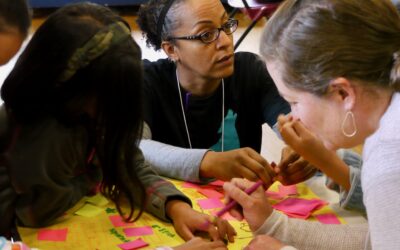This look-for tool aligns with the Danielson framework and supports principals, instructional leaders, or coaches in doing K-12 science classroom observations. The tool includes a pre- and post-reflection and three types of look-for tools depending on the type of science lesson being observed. The first focuses on student discourse and sensemaking, the second on students’ sensemaking with evidence, and the third on conversations that contextualize science historically, culturally, and politically. The tool was designed by Sarah Clancey and the C2AST project in partnership with Seattle Public Schools, funded by the National Science Foundation (DRL 1907471) and building on the work of Dr. Christine Chew (DRL 1315995).
Multilingual Science Theater Example
Using Science Theater as a format for student explanations.




 This site is primarily funded by the National Science Foundation (NSF) through Award #1907471 and #1315995
This site is primarily funded by the National Science Foundation (NSF) through Award #1907471 and #1315995